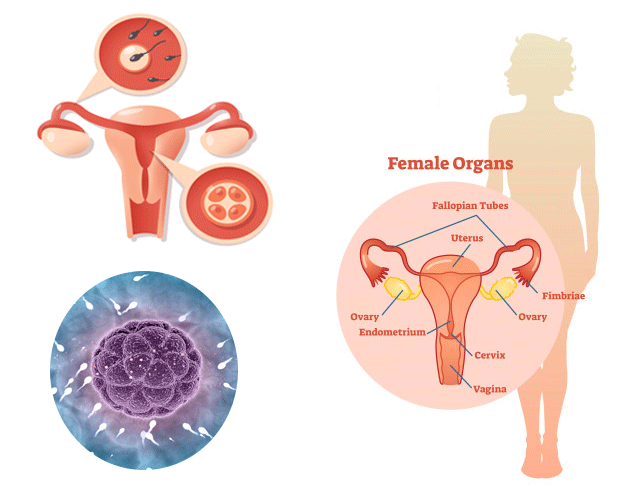In women, fertility means the ability to become pregnant and have a baby. A woman’s reproductive years begin when she starts her menses cycles after her puberty (about age 13). The ability to have a child usually ends around age 45, though it’s potentially possible for a woman to get pregnant until her periods end with menopause (about age 51).
When a baby girl is born, she already has in her body about 400,000 immature eggs (oocytes). These are stored in her ovaries in tiny fluid-filled sacs called follicles. Once she enters her reproductive years, she starts having monthly menstrual cycles. During each cycle, the ovary releases one egg (or, less commonly, more than one), which may go on to join with a man’s sperm (obviously after having sex) and begin a pregnancy.
The development and release of the egg depend on a delicate balance of hormones: chemicals that signal the body’s organs to do particular jobs. Some of these hormones are produced in the ovaries. Others (FSH – Follicle Stimulating Hormone and LH – Luteinizing Hormone) come from two glands in the brain, the Pituitary and hypothalamus (Gonadotropin Releasing Hormone GnRH).

